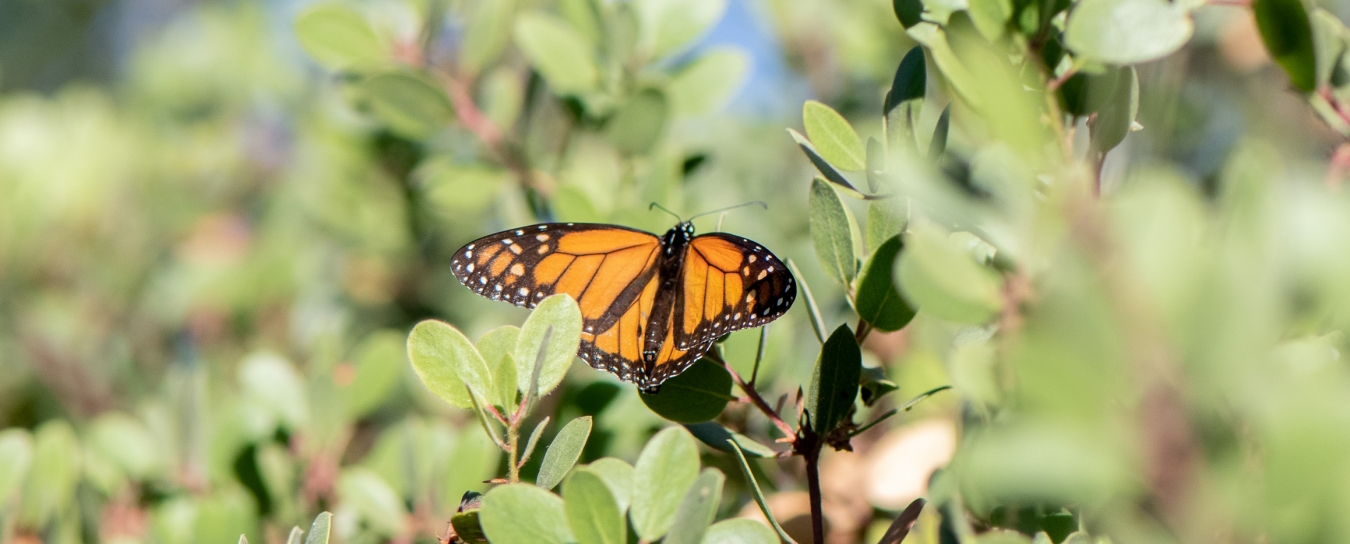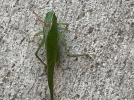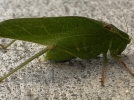
Invertebrates
See our handy guide to critters found in local homes and our Central Coast Butterfly FAQ. Browse the insects and other terrestrial arthropods we’ve identified. Check out local marine invertebrates, particularly bivalve mollusks and intertidal organisms.
- Anthropology
- Rocks & Fossils
- Invertebrates
- Vertebrates
- Botany
- Astronomy
- Fungi
- General
- Recently Asked
Is this a grasshopper?
Hello,
My son and I were wondering if this is a grasshopper. If so, which species?


Curator Response
Dear Hans,
This is a male katydid (a member of the family Tettigoniidae) of the genus Microcentrum. For some general information about katydids, see a previous Q&A here. Another interesting aspect of katydid biology is their singing ability: similar to crickets, males rub their forewings together to produce distinctive patterns of rasping, clicking, and chirping noises. Both sexes hear these sounds using a pair of tympana, drum-like organs near the front "knees," partially visible in the lateral photo as a darkened area. Females have an upcurved sword-like ovipositor at the end of the abdomen which they use to lay eggs, while males have a pair of thin cerci at the end of the abdomen (easily seen in the lateral photo).
Members of the genus Microcentrum can be easily distinguished from other large, green katydids by their antennal bases being widely separated on the head (most others have these almost touching). Additionally, the femur (long, bowling-pin-shaped segment) of the hind leg is relatively short; in another genus with widely separated antennae, Amblycorypha, which commonly occurs in the eastern and central US, the femur is almost as long as the wing. Unfortunately for us in this case, the two species of Microcentrum occurring in California are only reliably distinguished by their different songs! See the "Singing Insects of North America" entry here and another entry here if you are interested in playing audio files of the "clicks" of the two different species.
Although these insects have so-called "incomplete metamorphosis," in which there is no larval or pupal stage and the immatures are similar in body form to the adults, the young nymphs can actually look quite different from the adults. Have a look at a nymph of the genus Scudderia, also a large green katydid as an adult, here.
Stay curious,
Schlinger Chair and Curator of Entomology Matthew L. Gimmel, Ph.D.


